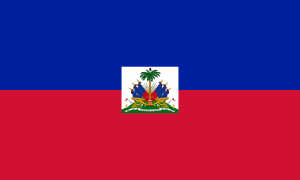Language/Haitian/Culture/Haitian-Geography
As a Haitian language teacher, I find it essential to teach my students about Haiti's geography. Haiti is a beautiful island country, sharing Hispaniola with the Dominican Republic. The country has a population of approximately 11 million people and covers an area of 27,750 square kilometers. In this lesson, we will explore Haiti's mountains, rivers, and major cities.
Mountains
Haiti's landscape is dominated by its three main mountain ranges, which run east to west across the country. The Massif du Nord, Massif Central, and Massif de la Hotte are all part of the Caribbean mountain system. The mountains have an average height of about 5000ft, with the highest peak being Pic la Selle at 8,793ft. The mountains are known for their lush vegetation, which makes them ideal for coffee and fruit cultivation.
Rivers
Haiti's rivers are critical for irrigation, transportation, and hydroelectric power generation. Several rivers and streams flow from the mountain ranges into the Caribbean Sea and the Atlantic Ocean. The longest river is the Artibonite, which flows 320 kilometers from the Dominican Republic border to the coast. The Artibonite River Basin is also the country's most extensive agricultural area.
Major Cities
Port-au-Prince, the capital city of Haiti, is the country's largest city, with a population of around 1 million people. The city is located on Haiti's west coast and is the country's economic and cultural center. Other major cities include Cap-Haïtien, Gonaïves, and Jacmel. Cap-Haïtien, located on Haiti's north coast, is the second-largest city in Haiti and is home to several historic landmarks, including Citadelle Laferrière, a UNESCO World Heritage site.
I hope this lesson has given you a better understanding of Haiti's geography. Next, we will explore Haiti's history and its struggles for independence.
Videos
Haitian Voodoo | National Geographic - YouTube
HAITIAN VOICES - Exploring Haitian Culture Through Food - YouTube
Related Lessons
- Haitian Dance
- Haitian Music Styles
- Haiti Timeline
- Haitian Holidays
- Haitian Independence
- Haitian Painters

